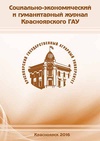The problem of recovery of public collective-farm animal husbandry of Krasnoyarsk Region in the days of the first post-war five-year period is con-sidered. This branch appeared in critical condition for a number of reasons: providing the population of the country and front with meat and dairy products exhausted already limited opportunities of collective farms of the region; fodder problem led to the exhaustion of cattle and fall; acute short-age of qualified personnel complicated the development of branch. The pur-pose of the study is the definition of the main areas of work within the ac-cepted Three-year development plan of public animal husbandry. The prep-aration of necessary food supply became one of the main tasks. In collective farms large-scale works on the improvement of meadows and pastures, mowing and siloing of forages began. Much attention began to be paid to the introduction of mechanization on preparations of forages and produc-tions on farms. Active construction of premises was not less important for stall cattle keeping. For this purpose on collective farms construction crews and necessary construction infrastructure were created, but it was not pos-sible provide all farms with necessary constructions. To increase the effi-ciency of cattle, it was necessary to improve breeding. The practice of preg-nant cows’ delivery on the account of state deliveries was one of the factors constraining the increase in the livestock of thoroughbred cattle. For the so-lution of the problem of the staff preparation on the courses was used, and also the system of material stimulation was developed and introduced. However, the problem of shortage of the personnel was not completely solved. During the implementation of three-year plan the attempts to im- prove zootechnical and veterinary service were made. By 1950, there were to be 65 zoo stations in the province, 250 zoo posts, by 1951 there were 100 sites and 263 animal checkpoints.. In spite of the fact that three-year plan was not implemented for all indicators, it played an important role in the development of branch in general. The study is written on the basis of ar-chival materials for the first time introduced into scientific circulation.
Krasnoyarsk Region, post-war period, animal husbandry, collective farms, farms, livestock, productivity
1. Istoriya Sibiri s drevneyshih vremen do nashih dney: v 5 t. T. 5. - L., 1969.
2. Gosudarstvennyy arhiv Krasnoyarskogo kraya (dalee GAKK). - F.R-1374. - Op. 2. - D. 2.
3. GAKK. F.P-26. - Op. 16. - D. 518.
4. Krasnoyarskiy kray v istorii Otechestva. Kn. 3. 1941-1953: hrestomatiya. - Krasnoyarsk, 2000.
5. Vystuplenie A.T. Tret'yakova na VII Sessii krayispolkoma // Krasnoyarskiy rabochiy. - 1950. - № 72.
6. GAKK. F.P-26. - Op. 20. - D. 508.
7. Ul'yanov L.N. Trudovoy podvig rabochego klassa i krest'yanstva Sibiri. 1945-1953. - Tomsk, 1979.
8. Trehletniy plan razvitiya obschestvennogo kolhoznogo i sovhoznogo produktivnogo zhivotnovodstva (1949-1951 gg.). - Krasnoyarsk, 1949.
9. GAKK. F.P-26. - Op. 21. - D. 19.
10. Vystuplenie A.B. Aristova IV na Plenume kraykoma VKP (b) // Krasnoyarskiy rabochiy. - 1950. - № 163.
11. GAKK. F.P-26. - Op. 22. - D. 540.
12. GAKK. F.P-26. - Op. 21. - D. 1307.
13. Stroitel'stvo pomescheniy dlya zhivotnovodstva v kolhozah // Krasnoyarskiy rabochiy. - 1949. - № 145.
14. GAKK. F.P-26. - Op. 25. - D. 601.
15. Narodnoe hozyaystvo Krasnoyarskogo kraya: stat. sb. - Krasnoyarsk, 1958.
16. Stalinskaya pravda (Dolgo-Mostovskiy r-n). - 1951. - № 26.
17. Za bol'shevistskiy kolhoz (Usinskiy r-n). - 1952. - № 39.
18. GAKK. F.P-26. - Op. 23. - D. 738.
19. 19. Tam zhe. - D. 725.
20. Tam zhe. - Op. 22. - D. 527.








